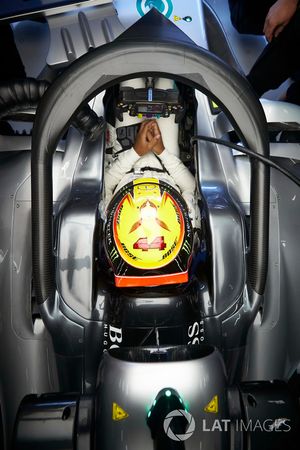F1 teams growing impatient over Halo load test details
F1 teams are waiting for the FIA to confirm details of how the new Halo load test will be conducted before they can finalise the specification of their 2018 chassis.

Photo by: Sutton Images







The teams have already been given full details of the Halo and the loads that the chassis mountings are expected to cope with.
However, they are still waiting to find out exactly how the push test will be applied – and thus how the loads will be distributed through their chassis.
A form of "virtual" testing may now be used as an interim measure for next season.
The complication is that the test cannot be conducted with a real Halo fitted, because the concept of the Halo is that it should fail before the chassis mountings.
The FIA thus has to design a method to conduct the test which replicates the way forces are put through the chassis by the Halo, but which involves higher loads than a real Halo would withstand.
Several teams are working with the FIA to resolve the issue, but the delay has caused some frustration, especially for those whose level of resources mean that key design parameters have to be frozen early.
"The actual Halo that we're going to run has been defined," said Force India technical director Andy Green.
"But the actual chassis that it bolts to hasn't. To try to get a chassis to cope with the sign-off loads that the FIA have imposed is a challenge.
"The Halo that we're going to race can't withstand those loads, so there's no point in using it to do the load tests on the chassis, because the Halo will fail first.
"So you have to do it with something else, and that's what we're trying to define at the moment.
"Depending on what that something else is will change how you design the chassis, and how strong you need to make the chassis, because it delivers the load in a different way, depending on the geometry.
"At the moment we're missing the details on that device, and it's quite fundamental to the design of the chassis. If you fail the test, you can't run."
Because of the time constraints the FIA is now proposing to back-up a physical test with Finite Element Analysis to model the loads on each team's 2018 chassis.
Teams would provide their own data for inspection and approval by the FIA in what would be an unprecedented form of virtual testing.
This would probably be an interim measure, prior to a refined and fully physical test for 2019. The plan will be discussed and potentially agreed in a Technical Regulations Meeting next week.
Be part of Motorsport community
Join the conversationShare Or Save This Story
Subscribe and access Motorsport.com with your ad-blocker.
From Formula 1 to MotoGP we report straight from the paddock because we love our sport, just like you. In order to keep delivering our expert journalism, our website uses advertising. Still, we want to give you the opportunity to enjoy an ad-free and tracker-free website and to continue using your adblocker.















Top Comments